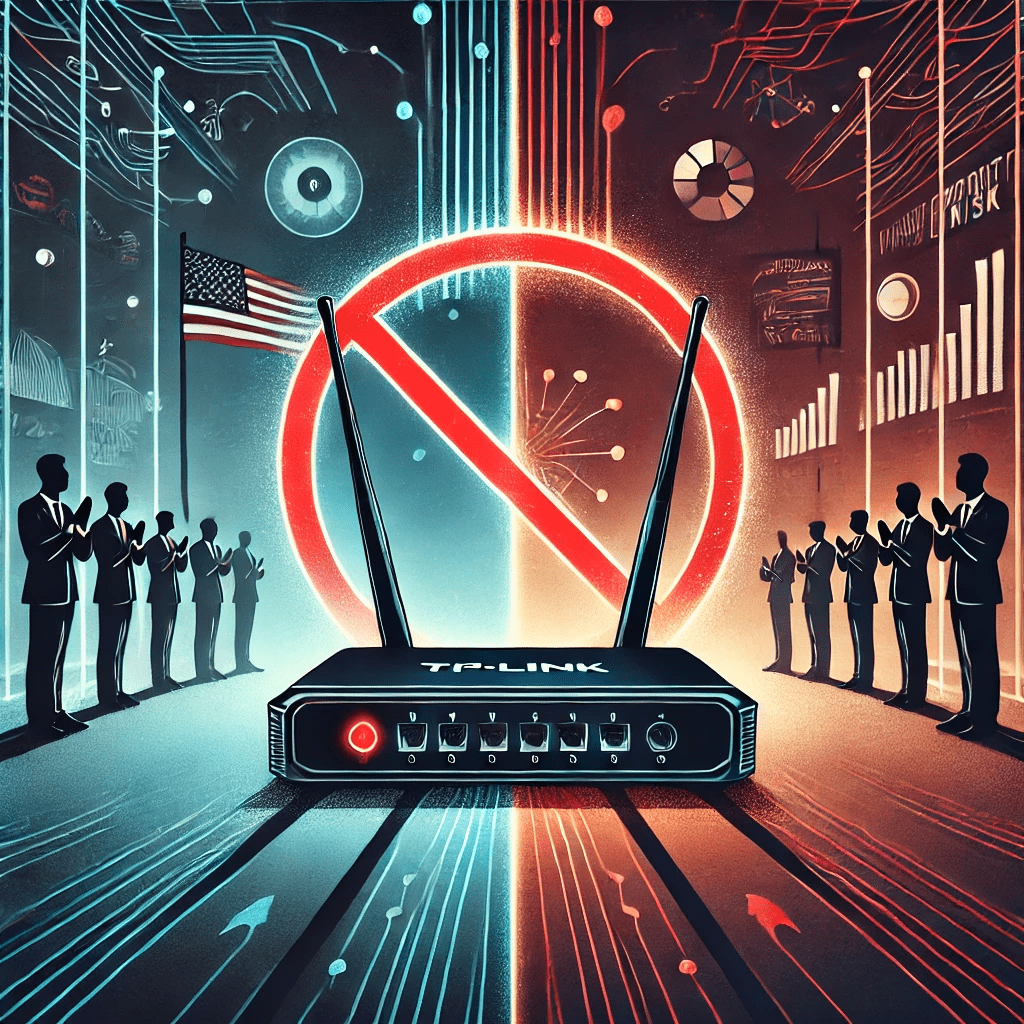The US Ban on TP-Link Routers: An Insight into Political Motivations
Join our weekly newsletters for the latest updates and exclusive content on industry-leading AI, InfoSec, Technology, Psychology, and Literature coverage. Learn More
Introduction

The United States government is reportedly considering a ban on TP-Link routers, citing concerns over national security. This move, while ostensibly about cybersecurity risks, appears rooted in geopolitical motivations, given TP-Link’s Chinese origin and its potential ties to the Chinese government.
Despite TP-Link’s routers being linked to known vulnerabilities, they rank lower on exploitation risk compared to other networking manufacturers like Cisco or D-Link. So, why the focus on TP-Link? This article explores the intersection of geopolitics, cybersecurity, and the implications of restricting products from a market leader.
Why Is TP-Link in the Spotlight?
The Geopolitical Context
- China’s Influence Over Businesses
- Chinese companies operate under a different business culture, with the government maintaining significant oversight.
- According to NetRise CEO Thomas Pace, “There is a member of the [People’s Republic of China] in every company,” whose role is to exert influence for national strategy and intelligence gathering.
- Rising Global Cyber Threats
- Threat groups like Volt Typhoon and Salt Typhoon have increasingly targeted edge devices, including routers, to build resilient command-and-control (C2) infrastructures.
- While TP-Link is not alone in facing scrutiny, its Chinese origin intensifies concerns about the potential for espionage.
- Precedents Set by Huawei and Kaspersky
- The US government previously banned Huawei networking equipment and Kaspersky software over similar national security concerns.
- These actions reflect a growing trend of scrutinizing technology from geopolitical rivals.
TP-Link’s Market Dominance in the US
- TP-Link holds 65% of the US router market, primarily serving households and small businesses.
- Its widespread adoption means potential vulnerabilities could have far-reaching impacts.
Cybersecurity Risks: Real but Not Unique
Known Vulnerabilities in TP-Link Routers
- CVE-2023-1389: A command injection flaw in TP-Link’s Archer AX21 router allows unauthenticated attackers to compromise devices with simple requests.
- Camaro Dragon Implant: Check Point Research discovered implants in modified TP-Link firmware images, though these were not present in the company’s official firmware.
Comparative Exploitation Risk
- According to CISA’s Known Exploited Vulnerabilities (KEV) catalog, TP-Link has two vulnerabilities listed.
- For comparison:
- Cisco: 74 vulnerabilities.
- Ivanti: 23 vulnerabilities.
- D-Link: 20 vulnerabilities.
While TP-Link is not a standout in exploitation risk, its vulnerabilities, like those of other IoT devices, underscore broader concerns about device security hygiene.
The Geopolitical Rationale for a Ban
1. National Security Over Technical Risk
- The absence of specific backdoors or exploits tied to TP-Link does not eliminate concerns about unknown risks, especially given the potential influence of the Chinese government.
- As Pace notes, the value of a ban lies in economic and strategic policy, making it harder for foreign-made products to dominate critical infrastructure markets.
2. Proactive Risk Mitigation
- Even without direct evidence of espionage, banning products from adversarial nations can reduce potential attack surfaces and supply chain vulnerabilities.
3. Economic and Strategic Signaling
- Restricting TP-Link’s products sends a message about the importance of technology sovereignty and the risks of relying on foreign manufacturers.
Lessons for Businesses and Consumers
1. Device Security Is Universal
- Vulnerabilities are not unique to any one manufacturer or country. American companies are equally susceptible to exploitation when devices lack:
- Strong passwords.
- Regular firmware updates.
- Proper configurations.
2. Due Diligence Is Key
- Organizations should:
- Regularly audit devices for vulnerabilities.
- Monitor for updates and patch firmware promptly.
- Consider trusted third-party management for critical devices.
3. Assume Zero Trust
- Given the inherent risks of IoT devices, adopt a Zero Trust Architecture, where no device is inherently trusted.
TP-Link’s Response
TP-Link has acknowledged the scrutiny and reiterated its commitment to:
- Supporting industry security standards.
- Engaging with the US government to address national security concerns.
In a statement, TP-Link emphasized:
“Many brands of consumer electronics are targeted by hackers, and we support government efforts to hold all producers to the same standard.”
Implications of a Ban
For the US Market
- Short-Term Disruptions: Consumers and small businesses may face higher costs or limited availability of affordable routers.
- Market Shift: Competitors like Netgear and Linksys may gain market share but could struggle to meet demand.
For Global Cybersecurity
- Increased Awareness: The ban highlights the importance of supply chain security and vendor transparency.
- Precedent for Future Restrictions: Other countries may follow suit, targeting foreign-made devices over national security concerns.
Conclusion
While the proposed TP-Link ban stems more from geopolitics than specific cybersecurity flaws, it underscores valid concerns about supply chain security and the influence of foreign governments on technology manufacturers.
For businesses and consumers, the lesson is clear: prioritize device security hygiene, scrutinize vendor practices, and adopt a proactive approach to mitigating risks. Whether the ban materializes or not, the discussion serves as a reminder of the complex interplay between cybersecurity and geopolitics in today’s digital landscape.
Discover more at InnoVirtuoso.com
I would love some feedback on my writing so if you have any, please don’t hesitate to leave a comment around here or in any platforms that is convenient for you.
For more on tech and other topics, explore InnoVirtuoso.com anytime. Subscribe to my newsletter and join our growing community—we’ll create something magical together. I promise, it’ll never be boring! 🙂
Stay updated with the latest news—subscribe to our newsletter today!
Thank you all—wishing you an amazing day ahead!






